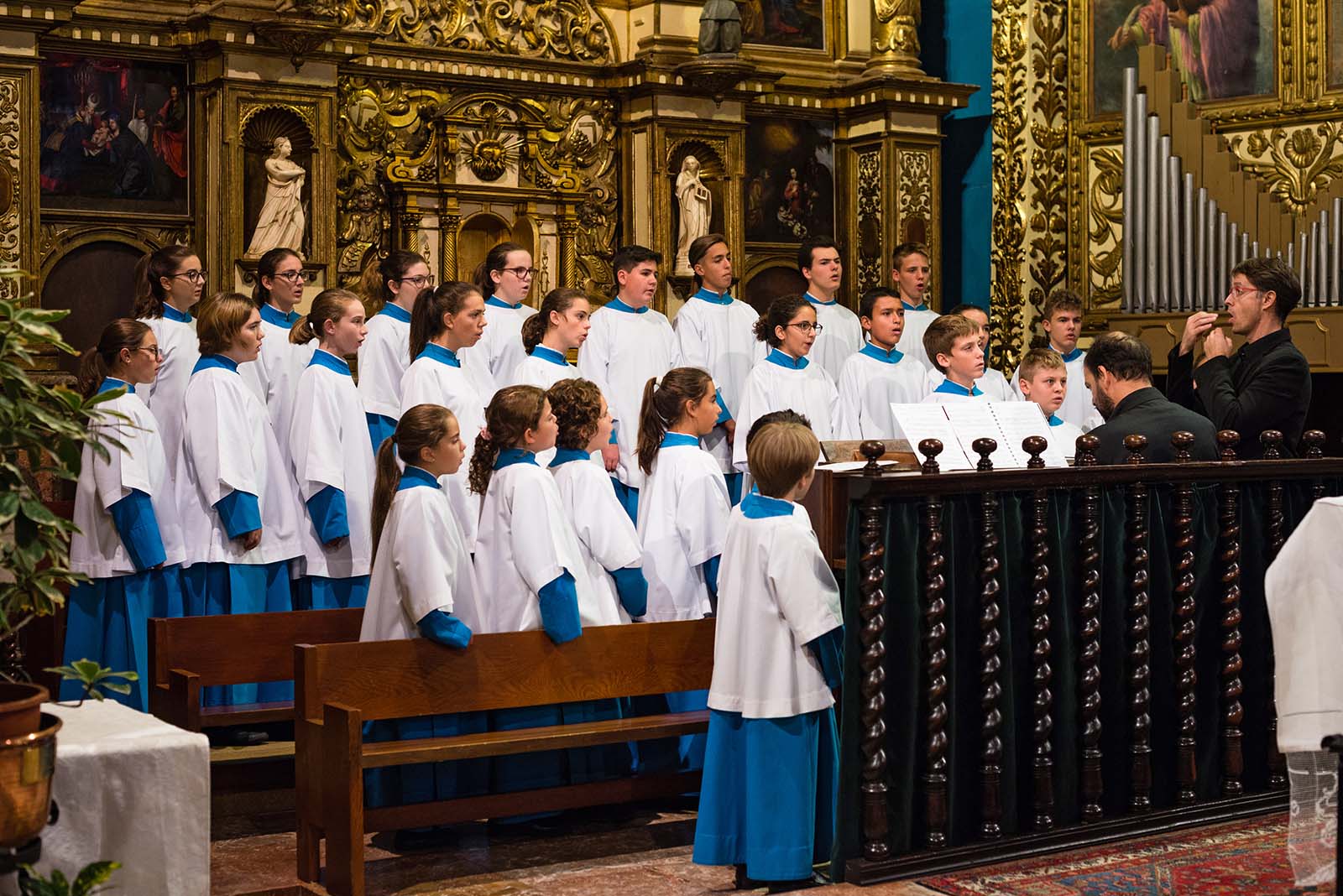“The musical tradition of the universal Church is a treasure of inestimable value, greater even than that of any other art. The main reason for this pre-eminence is that, as sacred song united to the words, it forms a necessary or integral part of the solemn liturgy.” (Sacrosanctum Concilium, #112)
Liturgical music is often a topic of conversation amongst Catholics, namely because of the wide variety of music that is played at Mass, as well as the fact that at some churches, you will hear more traditional music while at others you will hear more contemporary arrangements.
Published on December 4, 1963, and promulgated by Pope St. Paul VI, Sacrosanctum Concilium is one of the constitutions that came out of the Second Vatican Council. As it says in its opening paragraph, “it desires to impart an ever increasing vigor to the Christian life of the faithful”.
Amongst the general principles for the restoration and promotion of the sacred liturgy, the document discusses the various uses of music in the liturgy, including the acceptable uses of instrumentation.
“In the Latin Church the pipe organ is to be held in high esteem, for it is the traditional musical instrument which adds a wonderful splendor to the Church’s ceremonies and powerfully lifts up man’s mind to God and to higher things.
But other instruments also may be admitted for use in divine worship, with the knowledge and consent of the competent territorial authority, as laid down in Art. 22, 52, 37, and 40. This may be done, however, only on condition that the instruments are suitable, or can be made suitable, for sacred use, accord with the dignity of the temple, and truly contribute to the edification of the faithful.” (Sacrosanctum Concilium, #120)
While the definition of acceptable instruments might seem vague or subjective at first, the key requirements listed here are abundantly clear: The instruments used at Mass must be suitable for sacred use, in accord with the dignity of the church, and truly contribute to the edification of the faithful.
So, what does it mean to adhere to these requirements? It means that the instruments we use in Mass should be oriented towards complementing the liturgy. They should be suitable for the music composed for the Mass, they should convey the beauty of the prayer being sung, and they should not distract from what is taking place at the altar. The music should reflect the sacred and solemn character and nature of the celebration of the Mass.
“…the introduction into the celebration of anything which is merely secular, or which is hardly compatible with divine worship, under the guise of solemnity should be carefully avoided…” (Musicam Sacram, #43)
“…those instruments which are, by common opinion and use, suitable for secular music only, are to be altogether prohibited from every liturgical celebration and from popular devotions.” (Musicam Sacram, #63)
The same should be said of the specific songs chosen for Mass, and the style in which the songs are sung. As Pope St. John Paul II said, contemporary music has a dignity of its own and if it proves helpful to the prayer of the faithful, then it can be enriching. But liturgical music should be prayer, and we must refrain from allowing the music to become a performance during which the singers or musicians detract from the Holy Sacrifice being celebrated.
“Sacred music, being a complementary part of the solemn liturgy, participates in the general scope of the liturgy, which is the glory of God and the sanctification and edification of the faithful. It contributes to the decorum and the splendor of the ecclesiastical ceremonies, and since its principal office is to clothe with suitable melody the liturgical text proposed for the understanding of the faithful, its proper aim is to add greater efficacy to the text, in order that through it the faithful may be the more easily moved to devotion and better disposed for the reception of the fruits of grace belonging to the celebration of the most holy mysteries.
Sacred music should consequently possess, in the highest degree, the qualities proper to the liturgy, and in particular sanctity and goodness of form, which will spontaneously produce the final quality of universality.” (Tra Le Sollecitudini, #1-2)
While contemporary music may have its place, that does not mean that we have free reign to transform liturgical hymns into pop hits or rock songs.
“Not every kind of music can have a place in Christian worship. It has its standards, and that standard is the Logos. If we want to know whom we are dealing with, the Holy Spirit or the unholy spirit, we have to remember that it is the Holy Spirit who moves us to say, ‘Jesus is Lord’ (~ Cor 12:3). The Holy Spirit leads us to the Logos, and he leads us to a music that serves the Logos as a sign of the sursum corda, the lifting up of the human heart. Does it integrate man by drawing him to what is above, or does it cause his disintegration into formless intoxication or mere sensuality? That is the criterion for a music in harmony with logos, a form of that logike latreia.” (The Spirit of the Liturgy, p.148)
Musical entertainment is not the end goal of attending Mass. We should attend Mass because we have been granted the privilege of participating in the sacrifice of Our Lord on the cross, and we want to draw closer to God by consuming His body, blood, soul, and divinity through the sacrament of the Holy Eucharist.


